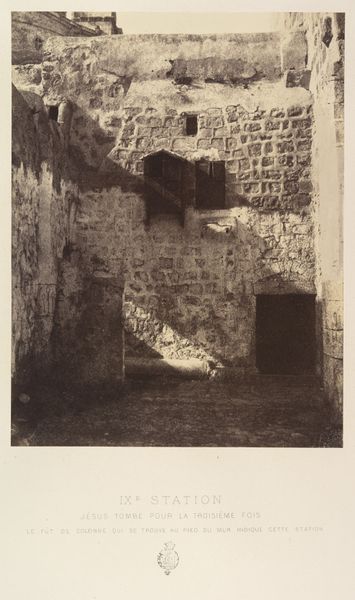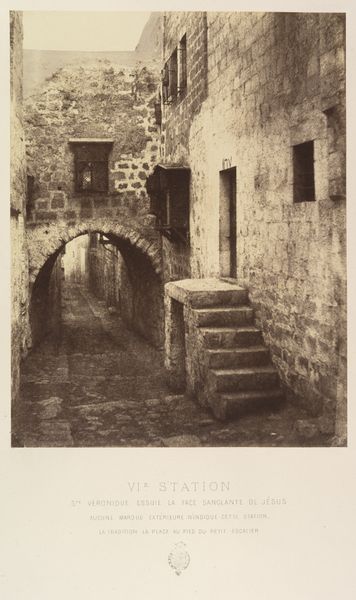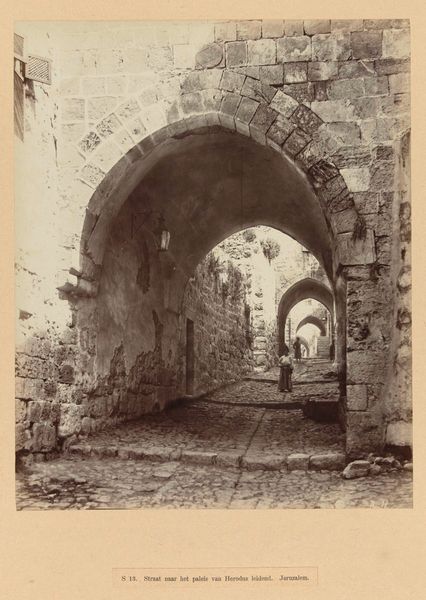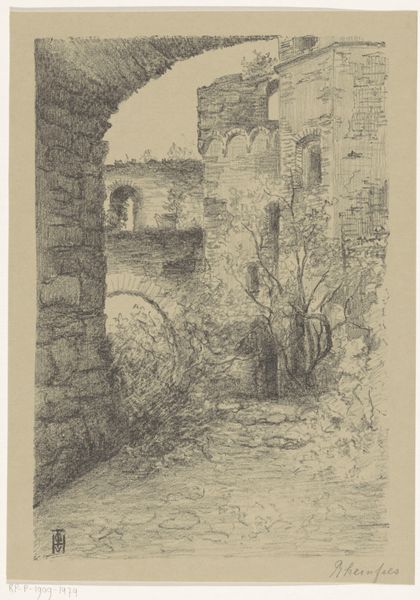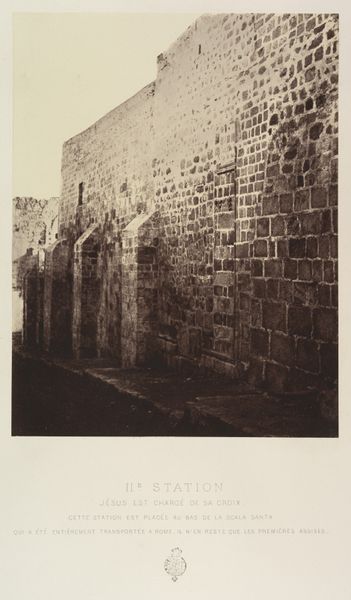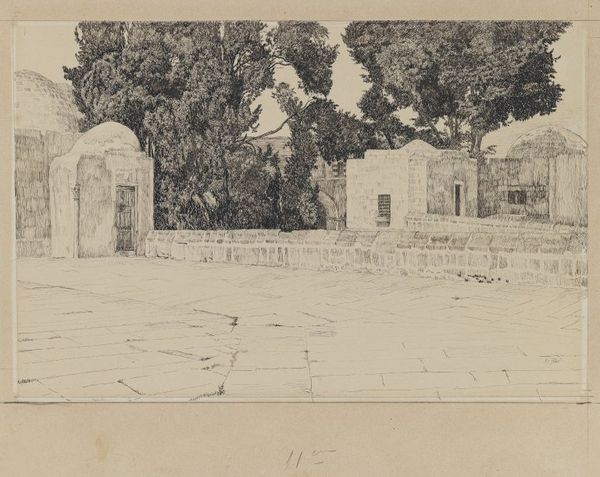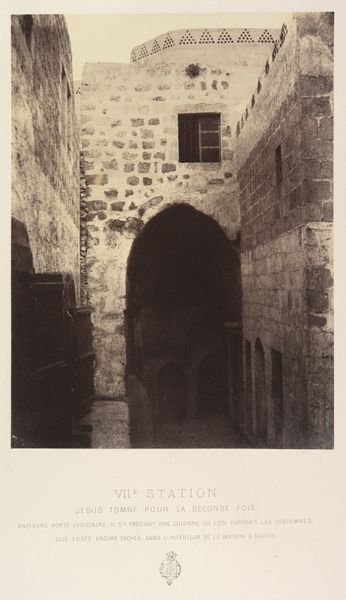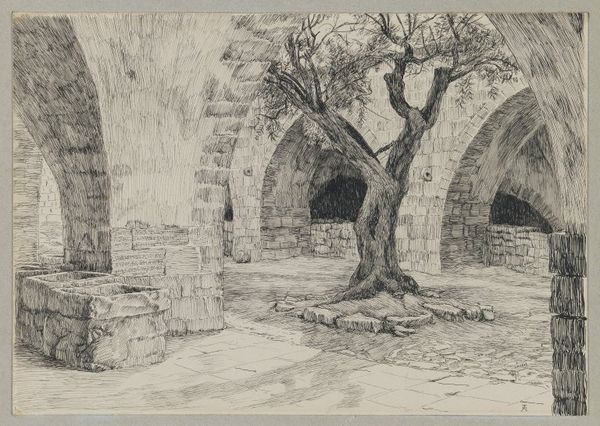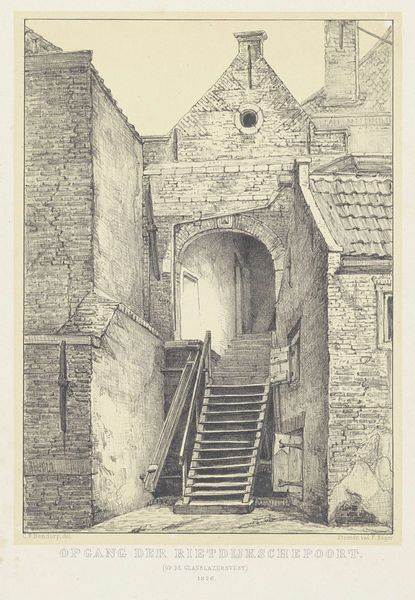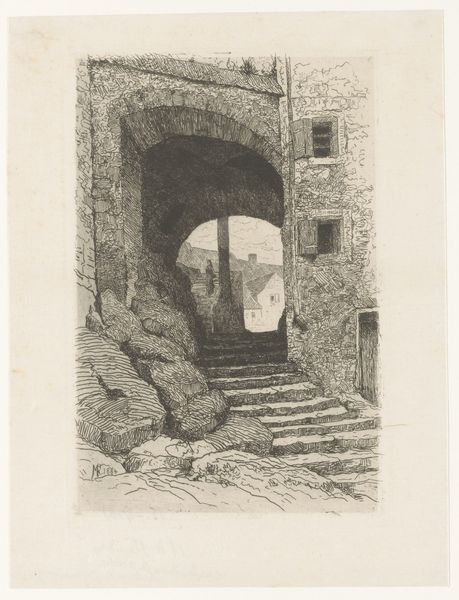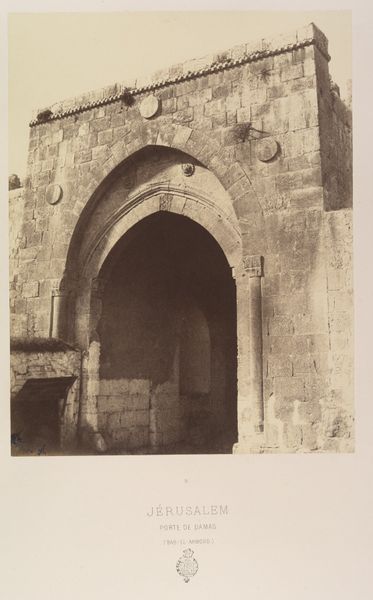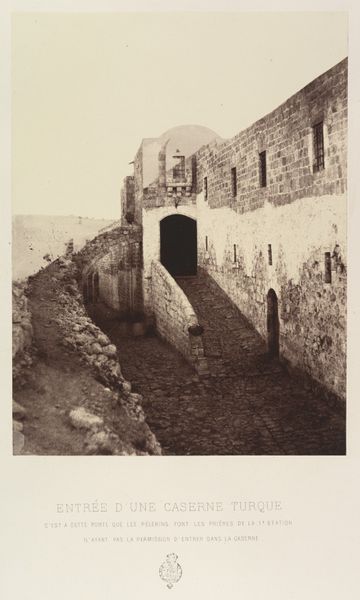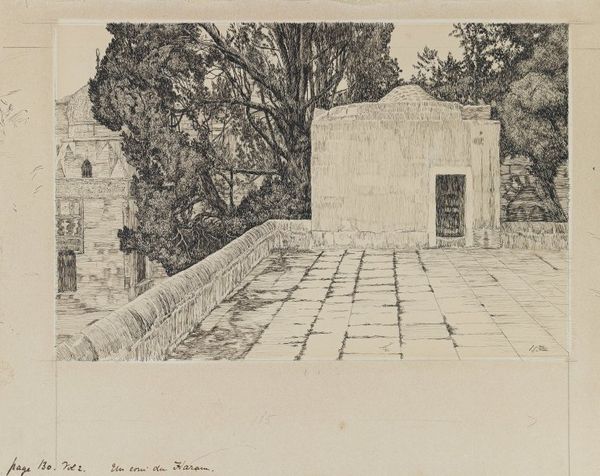
drawing, ink, pen
#
drawing
#
impressionism
#
landscape
#
house
#
ink
#
geometric
#
pen-ink sketch
#
france
#
pen
#
academic-art
#
realism
#
building
Dimensions: 23.8 x 15.7 cm
Copyright: Public domain
Curator: Ah, this one gives me a familiar, comfortable sort of melancholy. Like a favorite book found tucked away. Editor: That's an interesting read, tell me more! We are looking at "An Old Cistern," a pen and ink drawing crafted by James Tissot in 1889, now residing in the Brooklyn Museum. What strikes me first is its material presence, the evident labor behind this intricate, reproducible image. Curator: It feels immediate despite its age. You can almost hear the echo of footsteps on those stone steps, the slight drip of water. I think Tissot is so brilliant in this work. Pen and ink usually can be so stiff, yet he creates light and movement so seamlessly. It looks almost cinematic. Editor: Exactly, notice how Tissot exploits the stark contrast between black ink and the blank page. The penmanship produces varying degrees of shading, defining volume, the texture of the old stone, and architectural form. The medium seems entirely appropriate considering cisterns were vital for providing communities with access to potable water, particularly important for certain sectors of the nineteenth century population. Curator: You're pulling me away from the image into history! Still, I’m struck by the angle. We’re at the edge of the path looking at something just slightly off. Tissot, typically more figurative, offers us a pure landscape study – the light! The textures! I almost forget the narrative elements completely. Editor: Well, let’s consider who Tissot’s work spoke to. This piece exemplifies nineteenth-century art production and consumption: ink drawings allowed for multiple reproductions. Consider, therefore, the function, distribution, and ownership within a commodity system. How do all of these material conditions reflect or challenge traditional class distinctions? Curator: Oh, I am sure somebody in the French academic circle owned it. All the better to have it there, staring at you! Seriously though, to engage with the beauty of craftsmanship does have something truly egalitarian at its core. Editor: Indeed, maybe we’re both right then! What I appreciate most is how Tissot employs relatively simple materials to convey quite intricate concepts. The drawing makes me ponder the complex connection between resource availability, labor, and societal structure. Curator: And me… back to that dusty light, making even the ordinary beautiful and filled with hidden narratives.
Comments
No comments
Be the first to comment and join the conversation on the ultimate creative platform.
